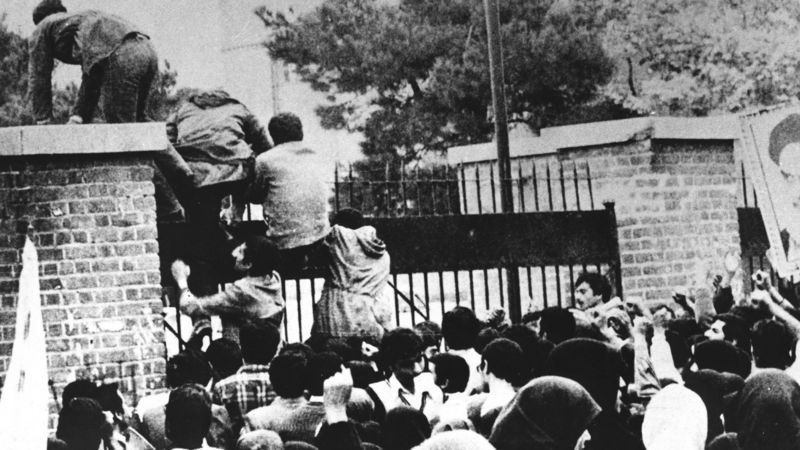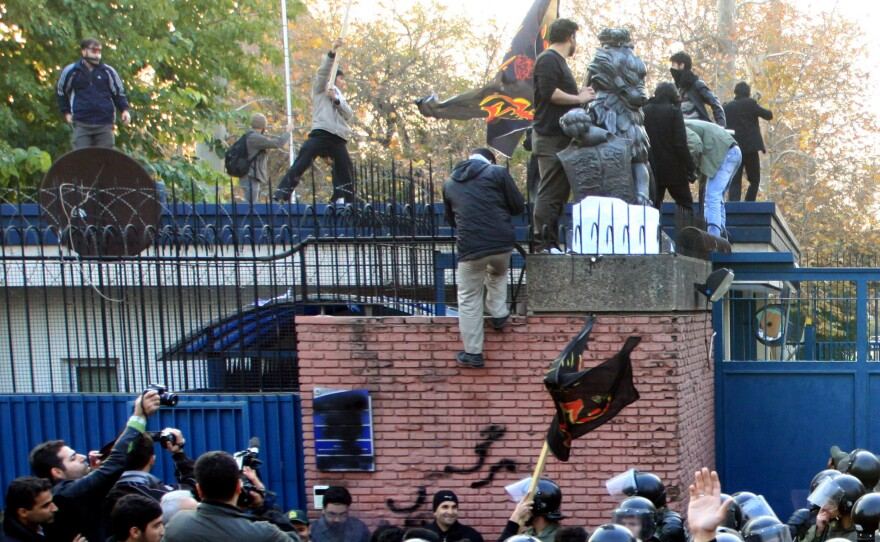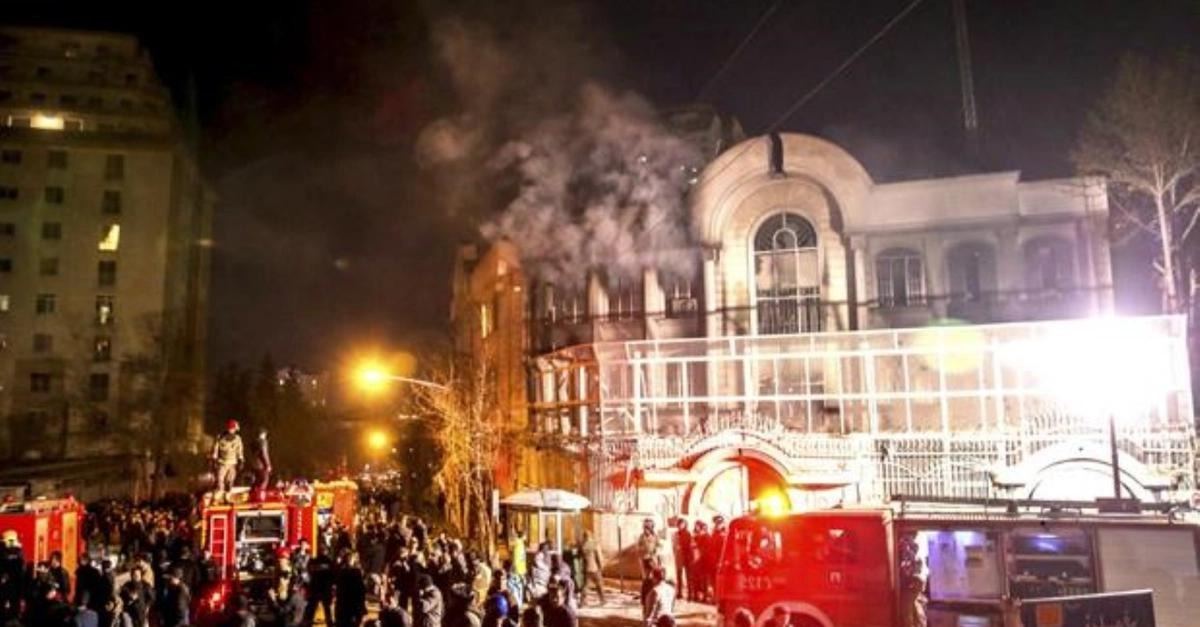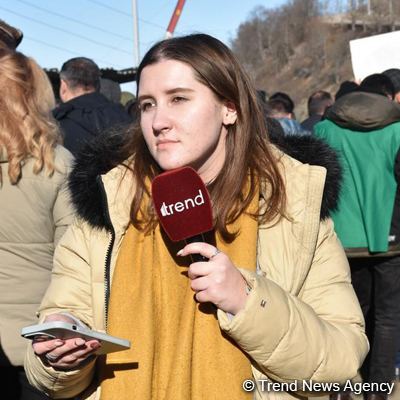BAKU, Azerbaijan, January 27. An armed attack took place at the Embassy of Azerbaijan in Iran early morning today. As a result of this attack, head of the security service was killed, while two embassy guards were wounded.
The gunman turned out to be a man in his 50's, who drove up to the administrative building, armed with a Kalashnikov automatic rifle.
Earlier reports from the Chief of Tehran police said there were two children in the car with the gunman, the security camera footage released later proved the man was alone.
According to the informed sources, the culprit of the incident is Yasin Huseynzade, an Iranian citizen, and there are suspicions that he is connected with the special services of Iran, primarily with the IRGC [Islamic Revolutionary Guard Corps].
A broad campaign against Azerbaijan that has been observed in the Iranian press and Iranian offices in recent months has led to this attack.
However, this treacherous terrorist attack against the Azerbaijani Embassy in Tehran is not an unprecedented case.
Back in 1979, during a student demonstration taking place on Talegani street (previously Takhte-Jamshid) at 09:00 on November 9, several thousand protesters of the student demonstration approached the US Embassy. Moments later, several hundred people launched the assault.
The Embassy security team used teargas, however, the crowd holding Ayatollah Khomeyni’s photos managed to open gates and penetrate the perimeter. The police arrived at the scene, however, the efforts to disperse the crowd did not yield results. The premises of the Embassy have been captured in the span of two hours.

The students demanded the surrender of Shah Pahlavi, who was in New York for medical reasons. The US diplomats, disarmed marine soldiers, and officers, totaling 90 people were held hostage. Later non-Americans, people of African descent, and women were liberated. However, 52 people remained in captivity for 444 days.
Much later, in November 2011, attacks on the two diplomatic representations of the UK in Tehran were carried out by the participants of a demonstration as a response to the introduction of additional sanctions against Iran. Protesters, armed with stones, lowered the flag in one of the buildings of the Embassy and burned it. After that, they raised the flag of the Islamic Republic in the Embassy building.

Prior to the protests, the Iranian Guardian Council (special supra-parliamentary authority), supported the legislation introduced a day prior, to decrease the level of diplomatic relations with the UK to the level of chargé d'affaires. The document also includes the rejection of a number of economic cooperation projects.
Decreasing the level of diplomatic relations and the protests in Tehran were retaliatory measures against the additional sanctions imposed by the UK against Iran.
The UK opted to impose additional sanctions as a result of a new International Atomic Energy Agency (IAEA) report, which said that Iran worked on creating a nuclear weapon and this work may be continuing. The US, Israel, and a number of Western countries suspect Iran of trying to create nuclear
According to eyewitnesses, the crowd smashed the security post in front of the embassy and smashed the wall stand. It was reported that about 30 participants of the incident were detained.
On Saturday, January 2, 2016, after the Saudi authorities announced the execution of 47 people, including a Shiite preacher, Iran was shaken by a wave of protests. The Saudi Embassy in Tehran and the consulate in Mashhad were attacked, and popular demonstrations began. In addition, the execution in Saudi Arabia was condemned by many politicians. The protests served as an excuse for Riyadh to sever diplomatic relations with Tehran, accusing it of "interfering in the internal affairs of the UK".

The attack that took place on the diplomatic mission of Azerbaijan is a continuation of the anti-Azerbaijani hysteria and the policy of escalation that Iran has been pursuing for a long time.
It is obvious that these provocations for all these many years are nothing but orders from the Iranian authorities and special services themselves.
The real situation is as follows: if the embassy guards had not stopped the attack, all embassy employees would have been killed. At the same time, the police in the area have not made any attempts to prevent the terrorist attack, and currently, no operational actions are being taken.
The statement of the Iranian side is a lie and is aimed at diverting attention from the terrorist associated with the Iranian special services and creating a false opinion in the local and international community. The video footage from the surveillance camera at the Azerbaijani Embassy also proves that the statements of the Iranian side are false.






